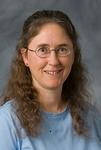Cited By
View all- Purewal SBrown D(2013)Using JavaScript to introduce social network programmingJournal of Computing Sciences in Colleges10.5555/2535418.253545229:2(212-219)Online publication date: 1-Dec-2013
- Benda KBruckman AGuzdial M(2012)When Life and Learning Do Not FitACM Transactions on Computing Education10.1145/2382564.238256712:4(1-38)Online publication date: 1-Nov-2012
- Purewal TBrown DSmith RVrbsky S(2012)Social network programming with JavaScript and SpotterProceedings of the 50th annual ACM Southeast Conference10.1145/2184512.2184598(347-348)Online publication date: 29-Mar-2012
- Show More Cited By




